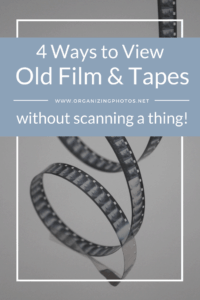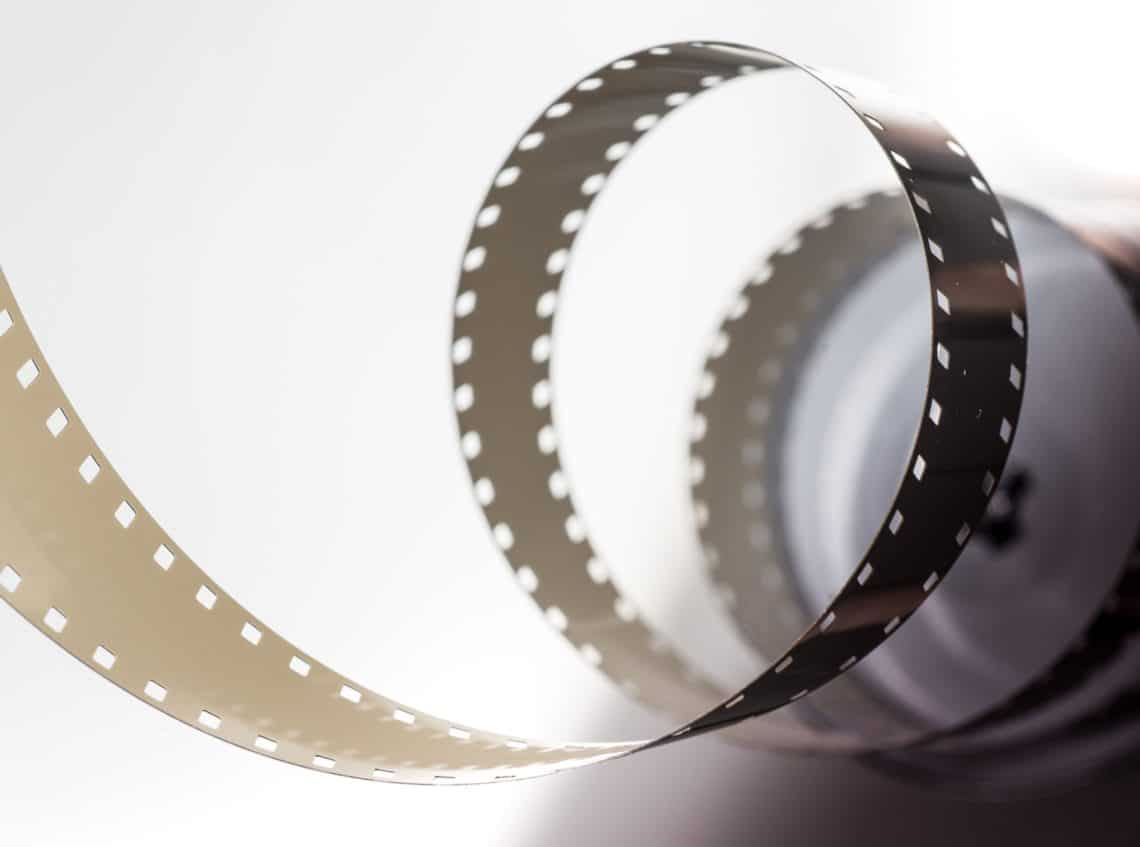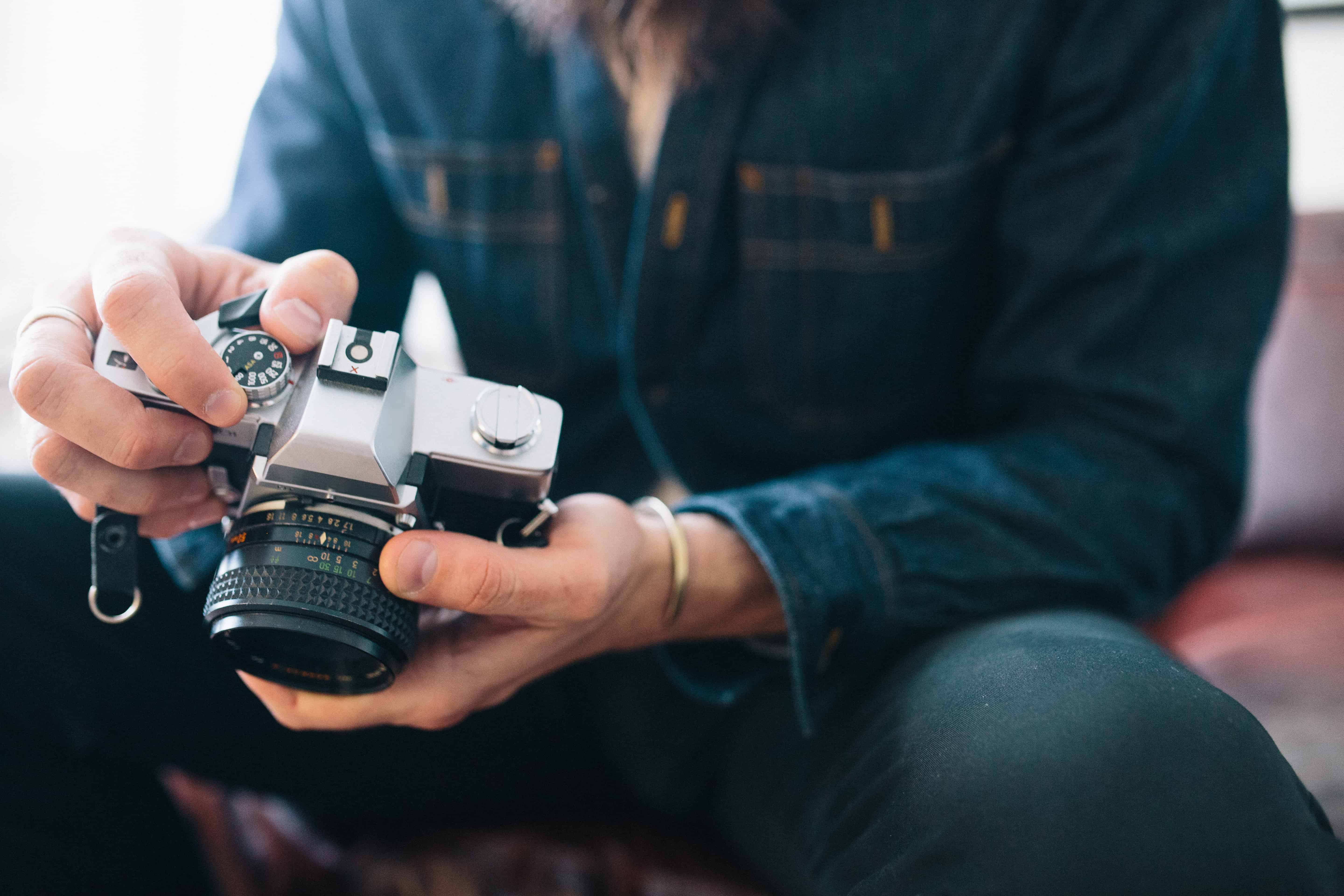In our last post, we gave you some tips on how to look your old slides and negatives without having to scan them! In this post, we continue by discussing your old VHS tapes, camcorder tapes, and reels of film. It’s a little trickier to deal with, but it can be done. Here’s how…
“I Don’t Know What’s On Those Tapes.”
That’s a direct quote from my most recent media conversion client, as she handed me a box of old VHS tapes, camcorder tapes, and super 8 reels. “I had even forgotten that these existed, but I’m really curious to see what’s on there. It could be some really great stuff because my dad taped everything.”
She was right. On those tapes was footage of her as a baby, learning to walk, her first birthday, and her first day of school. Precious memories. Stuff you definitely want to keep. But she had no idea exactly what was where, and had she not decided to go ahead and digitize everything right away, those memories could have been lost to time. I shutter at the thought (pardon the pun).
Ways to Find Out What’s On Your Tapes & Film
If you find yourself in the same pickle as my client, i.e. that you’re not sure what’s on your tapes and reels of film, there are a few things you can do to find out. You first instinct might be to pull out the old projector, but that’s not the greatest idea.
Film that is made from acetate tends to shrink and become very brittle with age, and when that happens, the sprockets (the little holes on the side of the film that the projector uses to forward it) no longer lines up properly. That can easily cause the film to rip or become damaged beyond repair. VHS-tapes are a little thicker, but anyone who has ever dealt with them knows how easy they are to damage. Ever seen a tape that got snagged? It’s a mess. Not the result you want with your family memories.
So, what do you do then? Well, here are a few options:
Method #1 – Ask for a “Blank Tape Check”
Unfortunately, unless you still have your old VHS player somewhere in storage, it’s not all that easy to get a preview of old tapes. And just like with film, they tend to degrade very quickly. In fact, if you’re struggling about where to spend your digitizing cents, it should probably be on your camcorder and video tapes. They were made cheaply for the purpose of distributing commercial media to as many people as possible and were never really suited for long-term storage. The film on your reels is actually of better quality and will last longer with proper handling and care.
If you’ll be using a professional service to transfer your content, ask for a “blank tape check.” My company provides them for only a few dollars per tape, and I bet many other service providers do as well. This is basically where the technician does a quick preview of the tape and lets you know what’s on it, so that you can decide whether or not it’s worth the money to digitize it. I’ve done plenty of these checks for customers, and in most cases, camcorder tapes are home videos. Film reels are usually home movies as well. VHS-tapes, however, often contain episodes of Jeopardy from 1993. So ask for those blank tape check on your VHS-tapes. They are usually the culprit of wasted money.
Method #2 – Get a Vintage Previewer
If you’re OK spending a few bucks to get a nice preview of your reeled footage, you can invest in a vintage film editor. These were popular back in the day when people wanted to edit their own film. You may have one of these cut-and-splice relics somewhere in your basement, who knows? Most models look like mini-projectors with two arms that you put your reels on. The film goes in one end and out the other. Often, you hand-crank the film through the machine while a light behind it illuminates it on a small screen.
The great part about these is that most of them are sprocket-less and much gentler on your film than projectors, if used properly. You have to make sure they are clean and in good working condition, but if they are, they usually work very well. For preview purposes, you don’t need anything too fancy, and a basic model will run you about $30-80. You can usually find a variety of models on Ebay. Here at The Swedish Organizer, LLC, we have a couple of vintage GOKOs that are still in excellent working condition. Other popular brands include Baia, Kalart, and Minette.
Method #3 – Use a High-Powered Magnifier
Just like when previewing slides, you can use a loupe or a larger magnifying glass to take a closer look at what type of film you have in storage. If you carefully pull out your film beyond the leader (the white starter tape), you can take a look at the first few frames of footage to see if you recognize it. It’s not the most efficient way (that would be method #2), but it does work if you’re on a budget. The trick is to use a high-powered magnifying glass that lets you get a good enough close up. Film frames are pretty small, so you need at least a 10x for it to work. And if it has built-in lighting, even better! You can get a good magnifying glass on Amazon and specialty ones over at Magnifier.com.
Method #4 – Utilize Free Preview Days
Many companies set up events, often during Save Your Photos month in September, where they let you come and preview your footage at their booths. If you have your reels and tapes ready to go, and in good condition, you may be able to take advantage of one of these free previews. The prerequisite is that you’re OK with a public display of your footage, which sometimes isn’t the best idea if you don’t know what’s on the tape. Just sayin’. Use your best judgement. 😉

I’m a Perfect Pinnable!
Remember to Check the Condition of Your Film Reels and Tapes!
Before you start handling your tapes and film, be sure to check their condition. Film should be clean and free of any residue build-up. If anything is brittle, smells like vinegar, or looks like it might be damaged in anyway, contact a professional lab for help. Pro8MM in Burbank, California is our preferred lab for difficult cases, and we highly recommend them. Film should have enough leader (white starter tape) to be able to go through a machine, and if it’s been spliced a lot, it may need to be reinforced first. Tapes should look intact and not have any weird bends or cracks in them. If anything looks off, ask a pro.
If you can’t get to the digitization part of the project for a while, at least make the effort to store your media in a safe and efficient way, so that you can enjoy it eventually. We have a few tips and tricks on how to do that in our blog post Keep, Toss, or Recycle? What to Do with Your Outdated Media.
Preview, Select, Convert
Those of us who are genealogists tend to want to digitize everything. That’s because we’re passionate about preserving our stories and our family history. But those of us who organize also know that “everything” isn’t what’s going to tell the best story. If you go to the movies, they show you the movie and nothing else. Not the hours and hours of scenes that were cut, oh no… not unless you buy into the “bonus material.” You want the edited version because that’s what tells the story, and it does so within a reasonable amount of time.
The same idea holds true for your home movies, and that’s because storytelling is storytelling, whether you’re working in Hollywood or with your own footage. Being selective is a good thing. You don’t have to digitize it all. And getting a preview of what you have makes the choice of what to convert and what to discard so much easier. So I guess what I’m saying is that – if you can – preview, select, convert. In that order. It’ll save you both time and money.
Tell me, dear readers – Did you go straight to converting, or did you preview your footage first? Let us know in the comments!
Featured Photo Courtesy of Skitterphoto
Join the Community!
Subscribe to get our latest content by email. You will also get occasional notifications about new sales and promotions.
Please read our Privacy Policy!






Billie Meyers, The Photo Nurse
August 21, 2018 at 12:02 pmHi, Caroline, Thank you for the GREAT post! Most of my film was Super 8 and 8 mm. I had a good idea of what was on them (AMAZINGLY, I had labeled them!!) so I just sent all those off. BUT the 1940s 16 mm reels were so badly damaged that very little could be retrieved by the professional services I sent them to. One service only charged me for the number of feet they were able to save. The other service charged me approximately $300, and I only got 7 minutes of movies. Guess which service I would use again!
I was able to convert most of my VHS tapes myself until my converter broke – GRATEFUL to say that happened after I’d done most of them. Sent the rest off.
Also, I didn’t realize you also do film conversion. Had I known that, guess who I would have sent them to. Y-O-U.
Thanks again,
Billie
Caroline Guntur
August 22, 2018 at 9:02 amThanks, Billie! Glad you got your footage converted, even if it wasn’t here! 🙂